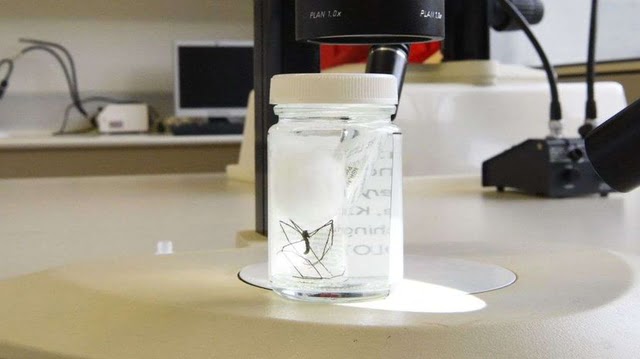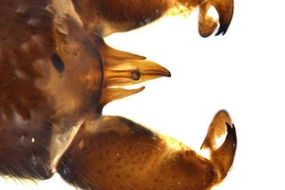Quck answer
A new species of crane fly was recently discovered. They have tiny wings and a double-barreled penis.
Wild Animals

The Minipteryx robusta, a newly discovered species of crane fly found in New South Wales, Australia, has some distinctive features, including very small wings and a two-pronged penis. Crane flies are fragile insects with lengthy, thin legs that are twice the length of their bodies, and 3-inch wingspans, and they are often found near water. While there are many species of crane flies, none have the unique characteristics of Minipteryx robusta, which has wings that are much smaller than other crane flies, measuring just 0.59 inches compared to the typical 2.5 inches, and a double-barreled penis. The insect was discovered by environmental scientist Gunther Theischinger, who has identified around 730 different insect species during his 50-year career, in Pipers Creek, which is located in Australia’s Kosciuszko National Park.

A close-up of the organ in question.
NSW Office of Environment and Heritage
The unusual anatomy of Minipteryx robusta has piqued the interest of Theischinger and other researchers. It has been noted that wings and climate are connected, as wings do not function well in cold, high-altitude environments since they cannot vibrate quickly enough to allow flight. Theischinger believes that Minipteryx robusta evolved with smaller wings to allow it to move around more easily in the cold, windy, high-altitude environment of Pipers Creek, which sits at 5,128 feet, and Mount Kosciuszko, the highest mountain in Australia, at 7,310 feet. The lack of functional wings may be a disadvantage during copulation, and the double-barreled penis could compensate by providing additional strength to the male to grasp the female.
Theischinger is now searching for a female Minipteryx robusta to learn more about this unique species of crane fly. Invertebrates, such as the crane fly, make up 97 percent of all animals on Earth, and there are approximately 1.3 million invertebrate species, with only 30 percent of Australia’s invertebrates having been officially described.
FAQ
1. What is a crane fly?
A crane fly is a long-legged, flying insect that is often mistaken for a mosquito. They are harmless and do not bite humans or animals.
2. What is unique about the newly discovered crane fly species?
The newly discovered crane fly species has tiny wings and a double-barreled penis, which is a unique feature not seen in any other crane fly species.
3. Where was the newly discovered crane fly species found?
The newly discovered crane fly species was found in the Amazon rainforest in Brazil.
4. How was the newly discovered crane fly species identified?
The newly discovered crane fly species was identified through DNA analysis and examination of its physical characteristics.
5. How does the double-barreled penis of the newly discovered crane fly species work?
The double-barreled penis of the newly discovered crane fly species allows it to transfer sperm to the female crane fly more efficiently, increasing the chances of fertilization.
6. How big is the newly discovered crane fly species?
The newly discovered crane fly species is very small, measuring only a few millimeters in length.
7. What is the scientific name of the newly discovered crane fly species?
The scientific name of the newly discovered crane fly species has not yet been determined.
8. Are there any other unique features of the newly discovered crane fly species?
Other unique features of the newly discovered crane fly species include its small size and its unusual wing shape.
9. What is the significance of the discovery of the newly discovered crane fly species?
The discovery of the newly discovered crane fly species adds to our knowledge of the diversity of life on Earth and highlights the importance of preserving habitats such as the Amazon rainforest.
10. Are crane flies harmful to humans or animals?
No, crane flies are harmless and do not bite humans or animals.
11. What other interesting facts are there about crane flies?
Crane flies are sometimes called “daddy long-legs” and are often mistaken for mosquitoes. They are important pollinators and play a role in the food chain as prey for other animals.





Leave a Reply